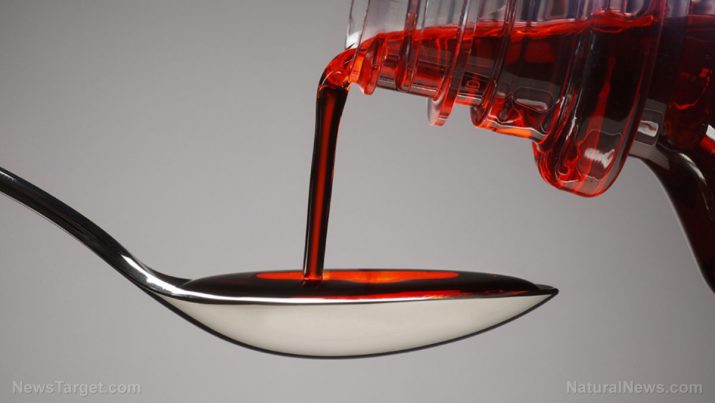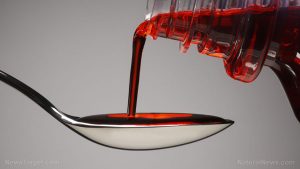
Benzoate – toxicity, side effects, diseases and environmental impacts
Wednesday, November 29, 2017 by Zoey Sky
http://www.naturalpedia.com/benzoate-toxicity-side-effects-diseases-and-environmental-impacts.html

Sodium benzoate is the sodium salt of benzoic acid, and it is used as an antifungal preservative in pharmaceutical preparations and foods. Commonly called benzoate, sodium benzoate may also be used as a test for liver function.
Benzoate appears as a white and almost odorless crystalline powder. It is also available in granules and as a liquid. According to Scorecard, over one million pounds of benzoate are produced annually in the U.S. alone.
Benzoate’s other names and identifiers include:
- 532-32-1
- Benzoic acid, sodium salt
- Sobenate
- Antimol
- Benzoate sodium
- Benzoate of soda
- Benzoate, sodium
- Natrium benzoicum
- Caswell No. 746
- Benzoan sodny [Czech]
- Sodiumbenzoate
- FEMA Number 3025
- UNII-OJ245FE5EU
- FEMA No. 3025
- CCRIS 3921
- HSDB 696
- Benzoesaeure (na-salz) [German]
- Sodium benzoate solution

List of known side effects
Benzoate can cause serious eye irritation. Cases of urticaria, asthma, rhinitis, or anaphylactic shock have been reported after oral, dermal, or inhalation exposure to benzoic acid and sodium benzoate. The symptoms appear shortly after exposure and disappear within a few hours, even at low doses of the substance.
Body systems affected by benzoate
In human exposure studies, the information concerning skin reactions caused by benzoic acid or sodium benzoate in the general population is limited. In a study with 2,045 patients of dermatological clinics, only 5 individuals (or 0.2 percent) had a positive reaction in patch tests.
On the other hand, 34 of 5,202 patients (or 0.7 percent) with contact urticaria reacted positively. Based on these data, it can be concluded that skin reactions caused by benzoic acid or sodium benzoate in the healthy general population are rare.
Items that can contain benzoate
Because of benzoate’s preservative and antifungal properties, it is commonly used as a preservative and anti-corrosive agent in different industries like food and cleaning. Benzoate can be found in:
- Conventional and green cleaning furniture polishes
- Toilet bowl cleaners
- Dishwashing detergent gels
- Carpet cleaning products
- Upholstery cleaners
- Dishwasher cleaners
Benzoate can also be found in these other industries/products:
- Auto care – antifreeze
- Arts and crafts – liquid soap colorants
- Food – sodas, other carbonated beverages, fruit juices, salad dressings, condiments, etc.
- Laundry – starches
- Medicine – IVs and medicines (liquid cough syrups, liquid acetaminophen, amoxicillin, and medicinal creams)
- Personal care – hair (shampoos, colorants, conditioners, and hairsprays) dental (mouthwashes, toothpastes), skin (body and facial washes, sunscreens, deodorants), and baby care products (baby wipes)
- Pet care – dental products
How to avoid benzoate
Because sodium benzoate is often used in various products for different industries, it can be hard to avoid. However, there are products that don’t contain the synthetic preservative. These products often use natural preservatives extracted from plants, such as rosemary, thyme, and camellia sinensis (the plant from which green tea is made).
Preservatives extracted from other natural sources, like microorganisms and animals, are another possibility. To reduce your exposure to benzoate, consider greener alternatives instead.
When handling benzoate, always wear the proper protective equipment and clothing.
- Eye/face protection – Safety glasses with side-shields conforming to NIOSH (U.S.)/EN166 (EU).
- Skin protection – Handle with gloves.
- Body Protection – Impervious clothing. The type of protective equipment must be selected according to the concentration and amount of the dangerous substance at the specific workplace.
- Respiratory protection – For nuisance exposures use type P95 (US) or type P1 (EU EN 143) particle respirator. For higher level protection use type OV/AG/P99 (US) or type ABEK-P2 (EU EN 143) respirator cartridges.
Where to learn more
- Australian Herbs Could Replace Dangerous Sodium Benzoate in Foods, Beverages
- Soda Manufacturers Attempt to Downplay Sodium Benzoate Link to Hyperactivity
- USDA to mask sodium benzoate preservative with new ‘anti-microbial’ label to trick consumers
- Health basics: What is sodium benzoate and how does it strangle human cells?
- Sodium benzoate is a preservative that promotes cancer and kills healthy cells
Summary
Commonly called benzoate, sodium benzoate is the sodium salt of benzoic acid.
Benzoate can cause serious eye irritation.
Benzoate is used as an antifungal preservative in pharmaceutical preparations and foods.
Sources include:
Tagged Under: Tags: benzoate





